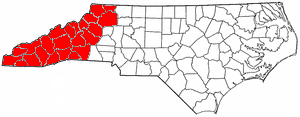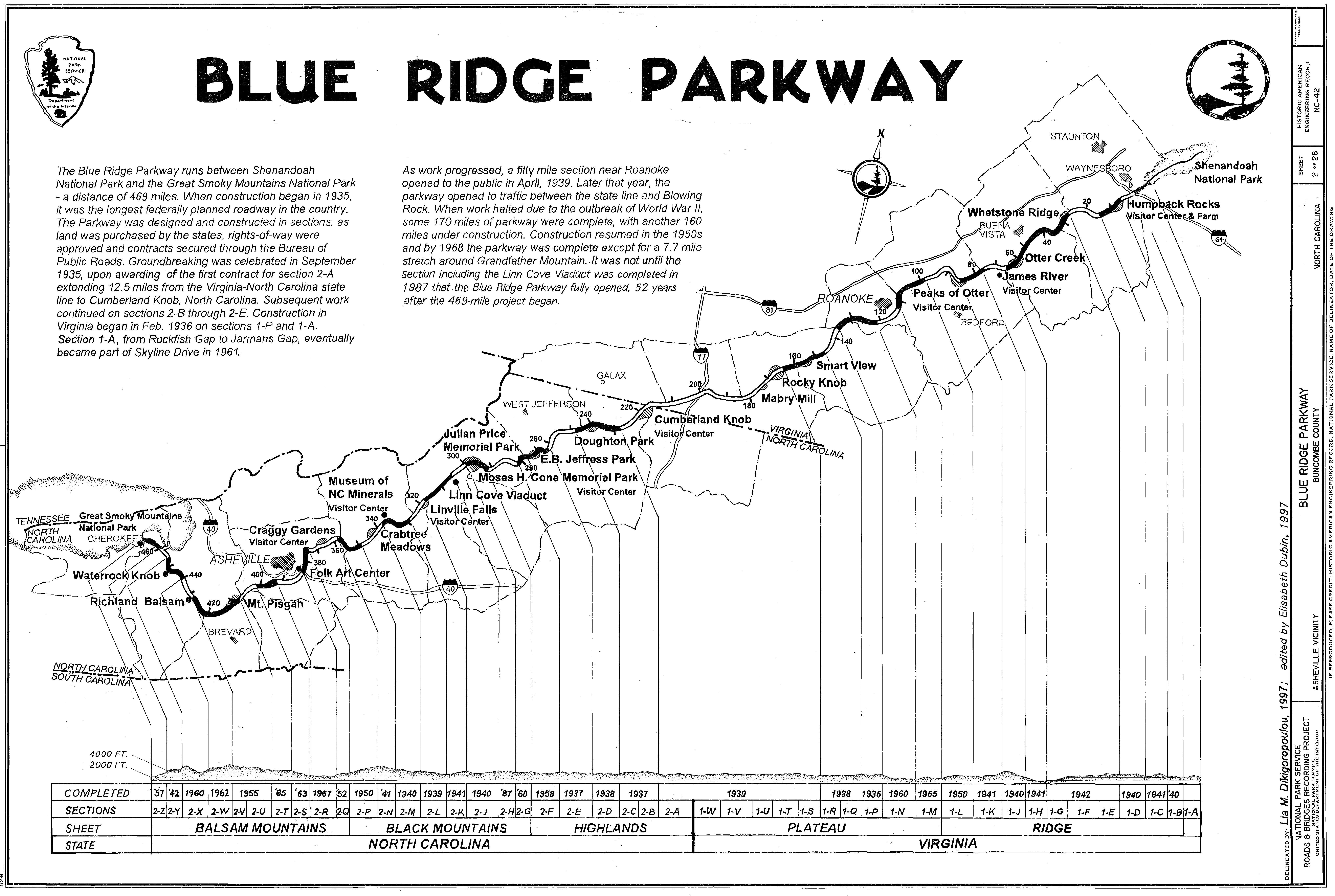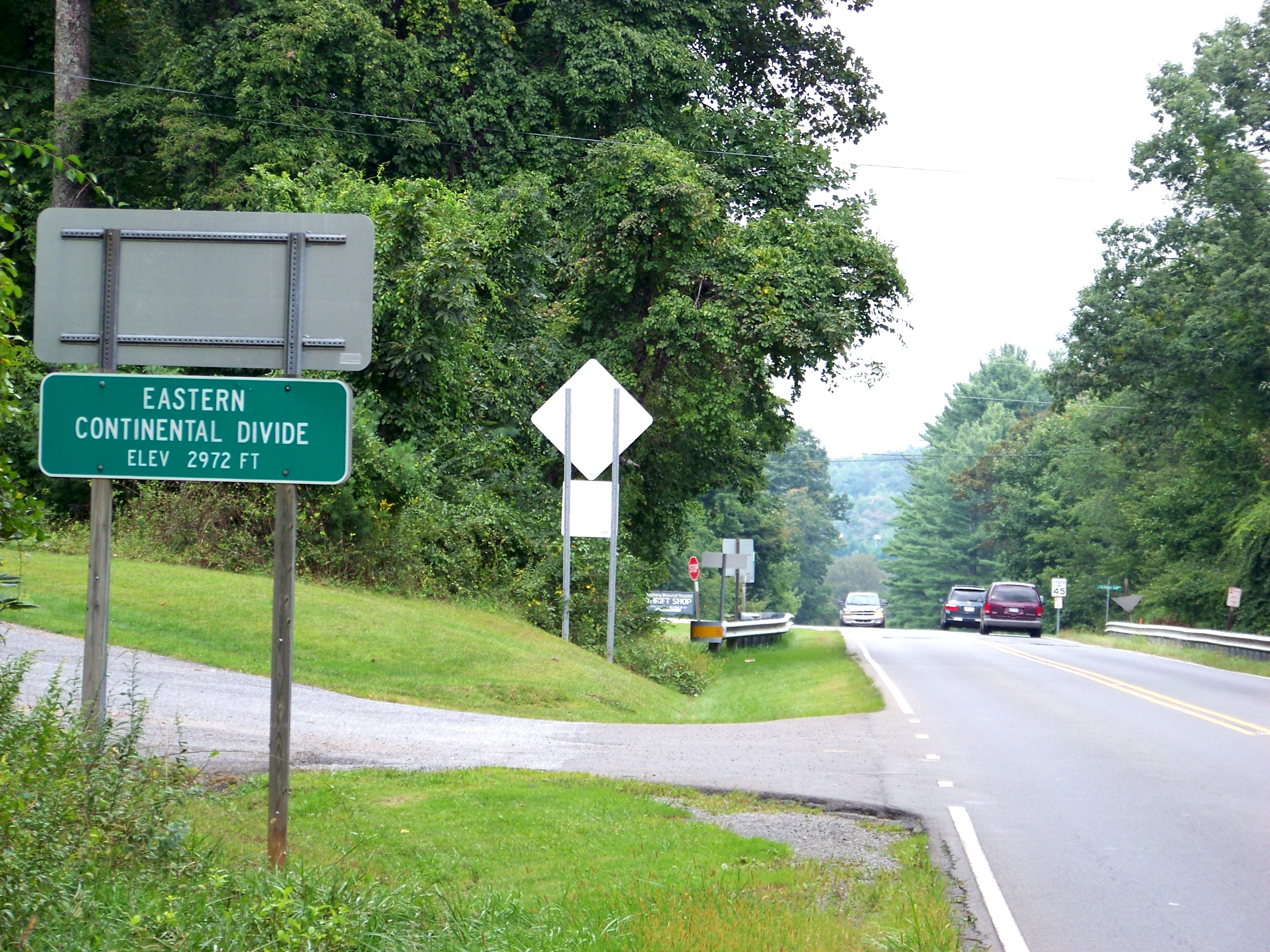|
U. S. Route 276
U.S. Route 276 (US 276) is a United States highway that runs for from Mauldin, South Carolina to Cove Creek, North Carolina. It is known both as a busy urban highway in Greenville, South Carolina and a scenic back-road in Western North Carolina. Route description In South Carolina, US 276 only runs in Greenville County, for a total of ; beginning at the I-385/ I-185 junction in Mauldin. The US Highway then runs north to the City of Greenville, then to Travelers Rest, and then Marietta before climbing into North Carolina. A two-mile portion of US 276 between Greenville and Travelers Rest is an expressway complete with shoulders, exits, a grass median, and a speed limit of 55 miles per hour. In Travelers Rest, a Downtown Revitalization Plan has reduced US 276 from four lanes down to two; added trees, on-street parking, a new park, and other improvements. After Marietta, US 276 climbs about to Caesars Head State Park in the Blue Ridge Mountains, from the North ... [...More Info...] [...Related Items...] OR: [Wikipedia] [Google] [Baidu] |
Western North Carolina
Western North Carolina (often abbreviated as WNC) is the region of North Carolina which includes the Appalachian Mountains; it is often known geographically as the state's Mountain Region. It contains the highest mountains in the Eastern United States, with 125 peaks rising to over 5,000 feet (1,500 meters) in elevation. Mount Mitchell at 6,684 feet (2,037 meters), is the highest peak of the Appalachian Mountains and mainland eastern North America. The population of the region, as measured by the 2010 U.S. Census, is 1,473,241, which is approximately 15% of North Carolina's total population. Located east of the Tennessee state line and west of the Piedmont, Western North Carolina contains few major urban centers. Asheville, located in the region's center, is the area's largest city and most prominent commercial hub. The Foothills region of the state is loosely defined as the area along Western North Carolina's eastern boundary; this region consists of a transitional terrain of hi ... [...More Info...] [...Related Items...] OR: [Wikipedia] [Google] [Baidu] |
National Forest Scenic Byway
The National Forest Scenic Byways are roads that have been designated by the U.S. Forest Service as scenic byways. Many are also National Scenic Byways (NSB). The program was initiated in 1987. __TOC__ List The following roadways were listed by the Federal Highway Administration The Federal Highway Administration (FHWA) is a division of the United States Department of Transportation that specializes in highway transportation. The agency's major activities are grouped into two programs, the Federal-aid Highway Program a ... as National Forest Scenic Byways as of August 2013: See also * References External links * {{Scenic Byways 01 National Forest Scenic Byway ... [...More Info...] [...Related Items...] OR: [Wikipedia] [Google] [Baidu] |
North Carolina Scenic Byways
The North Carolina Scenic Byways consists of roads in the state of North Carolina that travel through areas of scenic, historic, and cultural significance. Launched in March 1990, the scenic byway program has presently 59 designated byways, including three national scenic byways and one all American road, a total of . The intent of this system is to provide travelers with a safe and interesting alternate route. __TOC__ National scenic byways State scenic byways Other scenic byways and roads See also * National Forest Scenic Byway * National Scenic Byway References External links *NCDOT: Scenic Byways {{Authority control |
Interstate 40 In North Carolina
Interstate 40 (I-40) is a part of the Interstate Highway System that travels from Barstow, California, to Wilmington, North Carolina. In North Carolina, I-40 travels across the entirety of the state from the Tennessee state line along the Pigeon River Gorge to U.S. Route 117 (US 117) and North Carolina Highway 132 (NC 132) in Wilmington. I-40 is the longest Interstate Highway in North Carolina and is the only Interstate to completely span the state from west to east. Traveling from west to east, I-40 connects the three major regions of North Carolina—Western North Carolina, the Piedmont, and Eastern North Carolina. In the Piedmont region, I-40 connects the Piedmont Triad and Research Triangle metropolitan regions. Included in these regions are the cities of Raleigh, Greensboro, Durham, and Winston-Salem which represent the second through fifth largest cities in the state, respectively. In addition, I-40 connects the cities of Asheville and Hickory in Wester ... [...More Info...] [...Related Items...] OR: [Wikipedia] [Google] [Baidu] |
Maggie Valley, North Carolina
Maggie Valley is a town in Haywood County, North Carolina, United States. The population was 1,150 at the 2010 census. A popular tourist destination, it is home to Cataloochee Ski Area and the former Ghost Town in the Sky amusement park. Maggie Valley is part of the Asheville Metropolitan Statistical Area. The community gets its name from Maggie Mae Setzer; her father John "Jack" Sidney Setzer founded the area's first post office and named it after one of his daughters. History Before European colonization, what is now Maggie Valley was inhabited by the Cherokee people for centuries. Maggie Valley was officially incorporated as a town on May 10, 1904. Geography Maggie Valley is in west-central Haywood County at (35.514430, -83.067013). U.S. Route 19 is the main road through the town, leading east to Asheville and west over Soco Gap to Cherokee. According to the U.S. Census Bureau, the town has an area of , all land. Wildlife Elk were copious throughout the United States ... [...More Info...] [...Related Items...] OR: [Wikipedia] [Google] [Baidu] |
Blue Ridge Parkway
The Blue Ridge Parkway is a National Parkway and All-American Road in the United States, noted for its scenic beauty. The parkway, which is America's longest linear park, runs for through 29 Virginia and North Carolina counties, linking Shenandoah National Park to Great Smoky Mountains National Park. It runs mostly along the spine of the Blue Ridge, a major mountain chain that is part of the Appalachian Mountains. Its southern terminus is at U.S. Route 441 (US 441) on the boundary between Great Smoky Mountains National Park and the Qualla Boundary of the Eastern Band of Cherokee Indians in North Carolina, from which it travels north to Shenandoah National Park in Virginia. The roadway continues through Shenandoah as Skyline Drive, a similar scenic road which is managed by a different National Park Service unit. Both Skyline Drive and the Virginia portion of the Blue Ridge Parkway are part of Virginia State Route 48 (SR 48), though this designation is not signed ... [...More Info...] [...Related Items...] OR: [Wikipedia] [Google] [Baidu] |
Pisgah National Forest
Pisgah National Forest is a National Forest in the Appalachian Mountains of western North Carolina. It is administered by the United States Forest Service, part of the United States Department of Agriculture. The Pisgah National Forest is completely contained within the state of North Carolina. The forest is managed together with the other three North Carolina National Forests (Croatan, Nantahala, and Uwharrie) from common headquarters in Asheville, North Carolina. There are local ranger district offices located in Pisgah Forest, Mars Hill, and Nebo. Name ''Pisgah'' (פִּסְגָּה) is a Biblical Hebrew word with several meanings: it can be used to describe someone’s best achievement; another meaning is the highest point of a mountain. Some translators of the Bible book of Deuteronomy translated the word as a name of a mountain in general, usually referring to Mount Nebo. Lastly, Pisgah also means “summit”. History The Pisgah National Forest was established in 19 ... [...More Info...] [...Related Items...] OR: [Wikipedia] [Google] [Baidu] |
Eastern Continental Divide
The Eastern Continental Divide, Eastern Divide or Appalachian Divide is a hydrographic divide in eastern North America that separates the easterly Atlantic Seaboard watershed from the westerly Gulf of Mexico watershed. The divide nearly spans the United States from south of Lake Ontario through the Florida peninsula, and consists of raised terrain including the Appalachian Mountains to the north, the southern Piedmont Plateau and lowland ridges in the Atlantic Coastal Plain to the south. Water including rainfall and snowfall, lakes, streams and rivers on the eastern/southern side of the divide drains to the Atlantic Ocean; water on the western/northern side of the divide drains to the Gulf of Mexico. The ECD is one of six continental hydrographic divides of North America which define several drainage basins, each of which drains to a particular body of water. __TOC__ Course The Eastern Triple Divide is the northern terminus of the Eastern Continental Divide where it inter ... [...More Info...] [...Related Items...] OR: [Wikipedia] [Google] [Baidu] |
Blue Ridge Mountains
The Blue Ridge Mountains are a physiographic province of the larger Appalachian Mountains range. The mountain range is located in the Eastern United States, and extends 550 miles southwest from southern Pennsylvania through Maryland, West Virginia, Virginia, North Carolina, South Carolina, Tennessee, and Georgia. This province consists of northern and southern physiographic regions, which divide near the Roanoke River gap. To the west of the Blue Ridge, between it and the bulk of the Appalachians, lies the Great Appalachian Valley, bordered on the west by the Ridge and Valley province of the Appalachian range. The Blue Ridge Mountains are known for having a bluish color when seen from a distance. Trees put the "blue" in Blue Ridge, from the isoprene released into the atmosphere. This contributes to the characteristic haze on the mountains and their perceived color. Within the Blue Ridge province are two major national parks – the Shenandoah National Park in the northern secti ... [...More Info...] [...Related Items...] OR: [Wikipedia] [Google] [Baidu] |
Caesars Head State Park
Caesars Head State Park is a park in northern Greenville County, South Carolina, that borders Transylvania County, North Carolina, and is reached via US 276. The eponymous rock formation, one of the highest points in Greenville County, is a granitic gneiss outcrop at above sea level on the Blue Ridge Escarpment of the Blue Ridge Mountains and rests roughly above the Piedmont below. The origin of the name "Caesars Head" is disputed, though the outcrop was most probably named for an early mountaineer's dog. Caesars Head State Park and Jones Gap State Park are jointly administered by the state Department of Parks, Recreation, and Tourism as part of the Mountain Bridge Wilderness. History In 1825 the state engineer and noted architect Robert Mills described Caesars Head as a "mass of granite, rising from the vale, through which a rapid river winds its turbulent way...the ledges of stone, rising almost perpendicular, and at length, hanging over at hetop, so that they seem to totte ... [...More Info...] [...Related Items...] OR: [Wikipedia] [Google] [Baidu] |
Limited-access Road
A limited-access road, known by various terms worldwide, including limited-access highway, dual-carriageway, expressway, limited access freeway, and partial controlled access highway, is a highway or arterial road for high-speed traffic which has many or most characteristics of a controlled-access highway (also known as a ''freeway'' or ''motorway''), including limited or no access to adjacent property, some degree of Dual carriageway, separation of opposing traffic flow, use of grade separated Interchange (road), interchanges to some extent, prohibition of slow modes of transport, such as bicycles, Working animal, (draught) horses, or self-propelled agricultural machines; and very few or no intersection (road), intersecting cross-streets or level crossings. The degree of isolation from local traffic allowed varies between countries and regions. The precise definition of these terms varies by jurisdiction.''Manual on Uniform Traffic Control Devices''Section 1A.13 Definitions of ... [...More Info...] [...Related Items...] OR: [Wikipedia] [Google] [Baidu] |




.jpg)


